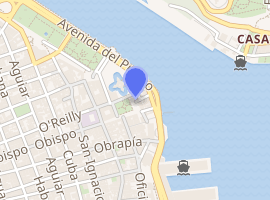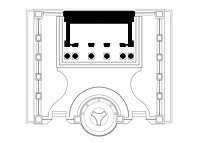El Templete
Built in 1827, El Templete commemorates the site of the first mass and town council of San Cristóbal de la Habana celebrated on November 16, 1519.
| El Templete | |
|---|---|
_(14779070654).jpg) | |

| |
| General information | |
| Type | Memorial |
| Architectural style | Neo-classical |
| Location | Havana Vieja |
| Town or city | |
| Country | |
| Coordinates | |
| Technical details | |
| Material | Stone |
Architecture

Although the pineapples that crown the pillars of the fence tropicalize a Neo-Classical vocabulary, the structure imitates a small Greco-Roman temple with Doric columns topped by a classical pediment. Construction was completed in 1828 in honor of Maria Josepha Amalia of Saxony, wife of King Fernando VII. The architecture of the Templete was a transition from the 19th-century ‘Cuban baroque,’ as represented by the Havana Cathedral, to the Neoclassical style.
The small interior houses three large oil paintings by the French artist Jean Baptiste Vermay (1818-1833), founder of the San Alejandro Arts Academy in Havana. Vermay's paintings depict the first mass, the first council, and the blessing of the Templete on its inauguration.
Tradition
Among the elements in this building that attest to the importance of the chosen site, one of the most relevant is the commemorative ceiba tree which constitutes a sacred symbol in various religions, such as the Yoruba religion, and to which people in Havana come yearly in search of prosperity and well-being. As a tradition, every November 15th people wait for midnight in El Templete to go around the ceiba three times and make a wish and celebrate a new anniversary. A procession of the city's 16th-century maces – normally kept in the Museo de la Ciudad – makes its way around the Plaza de Armas to the ceiba tree to commemorate the city's founding. Superstitious Habaneros queue up to walk around the sacred ceiba tree three times and make a wish in the belief that the Orisha will honor their wish.[1]
In March 2016, ceiba was withdrawn due to deterioration. The process of replacing the emblematic ceiba was an event for residents and visitors alike. Close to the Templete, there is a column which replaces a silk-cotton tree, under which the first mass and the first Council of Havana were celebrated.[2]
See also
References
- "El Templete". Retrieved 2018-10-06.
- "Templete: genesis of a city". Retrieved 2018-10-07.
_(5981484793).jpg)
